Hands-On Learning Center
Many of our courses on SchoolhouseTeachers.com include a hands-on learning component. Here is a list of the ones with the most hands-on content in each subject. If you use a course with a hands-on component that we don’t have listed here, let us know! Email stdirector@theoldschoolhouse.com. Don’t miss Kinetic Connections, designed to help parents incorporate hands-on learning with a variety of subjects, and keep watching as we add new courses to this list.
It’s sometimes useful to find your student’s best learning style. Download this Learning Styles Assessment PDF to help.
Also, be sure to read Tips for Homeschooling Active Learners.

A Century of Art: Each lesson in A Century of Art explores the unique elements that contribute to the particular style, including the history, and introduces students to key artists of the time period. Each also includes an art project to familiarize students with the style. Numerous opportunities for students to explore one or more styles more deeply are provided.

Achieving Art Success with ArtAchieve: These art lessons teach your students how to create works of art, but they don’t stop there. They incorporate history, geography, social studies, literature, and even math and science in as many was as possible to interest the non-art student in art and interest the art student in other important subjects. There are short videos, printable guides, cross-curricular ideas, and more!

All About Art: This six-week course is designed to introduce children in 1st-3rd grade to the basics of color in art and significant types of art including still lifes, abstract, landscapes, and self-portraits. Each lesson includes an art activity for students to experiment with what they have learned.

Art & History: Interconnected: What did Michelangelo have to do with the Reformation? How did the Baroque period send the Pilgrims high-tailing it to the New World? Nothing happens in a vacuum. History affects art, and sometimes, art affects history. This course explores how world events have impacted art and how different artists communicate their message through their art.

Art: The Timeless Treasure: Each lesson in Art: The Timeless Treasure discusses characteristics of the style; art, architecture, sculpture; artists and architects; and each lesson includes a wide variety of activities. Each also includes an art project to familiarize students with the style. Numerous opportunities for students to explore one or more styles more deeply are provided.

Art Tips with Jan Bower: These short video clips offer art tips that will help students improve at any level. All artists run into occasional roadblocks, and these professional art tips and tricks can help get past those hurdles. A new, fun, and simple art tip will be posted each week by award-winning portrait artist and illustrator Jan Bower. This course is not designed to be a stand-alone art class but rather to be used as a follow up or companion to Jan’s first course on SchoolhouseTeachers.com, Drawing with Realism.

Digital Art and Product Designs for Small Businesses: This digital art course introduces students to the world of possibilities for putting their artistic and creative skills to work online in any number of fields. The course covers Photoshop® tools and techniques, rules for governing images, where to find them, how to edit and manipulate images, fonts and word art, logos and banner ads, images for social media branding, product design, and more.

Discovering Art History helps students learn to group paintings or other artwork by style, subject, or artist and introduces several different careers in the field of art. Students will learn about various styles and artists and have a chance to practice each style learned. Numerous art-related books available through many libraries are also suggested to enhance learning.

Drawing with Realism: This video-based art class by Jan Bower of Drawing Success teaches your student key skills needed to draw a variety of textured objects with a high degree of realism. Though suitable for the beginner, it also offers challenges for more advanced students. A new unit focusing on a different object is posted each month and is divided into four instructional videos for your convenience.

Elementary Art is a series of units designed for various elementary ages. Each unit focuses on a different area of art such as famous artists, color theory, primary colors, and more.

Everyday Easels: Do you have a child you would like to introduce to art appreciation through a subject he enjoys more, such as history or science? Do you want a unit study that explores art appreciation alongside other core subjects? We have more than 75 unit studies (ranging from 5-day to 10-day) that cover various pieces of art and architecture through subjects such as math, English, history, the Bible, and more.

Exploring the World of Art: Whether your student wants to create three-dimensional art with cardboard or use oil pastels to create a detailed scene, Exploring the World of Art taught by Angela Beeson provides step-by-step art lessons in many different mediums for the elementary through high school student.

Learning About Art is a fun series of ten lessons specially designed to teach preschoolers and early elementary students about art. They’ll look at Audubon, Homer, Rousseau, and many other masters and learn about things like lines, movement, shapes, and more. They’ll also have a chance to make their own creative pictures. Much guidance is given, so there is no former knowledge of art required to present this class.

Studio Art for Teens: Sharon Jeffus of Visual Manna showcases the work of her teen artists who are pursuing art as a ministry. More than fifty lessons are available in this art study. Each lesson is designed to be done in a one- or two-week period. Lessons teach artistic skills through the study and imitation of the masters.

The Bible Study for Preteens series is designed to help students grow deeper roots by studying God’s Word. Daily studies take students into the Old Testament through the lives of Rebekah, Ruth, Hannah, Nehemiah, Esther, Job, Daniel, and Jonah and begin the New Testament with a study of Lazarus’ sister Mary.
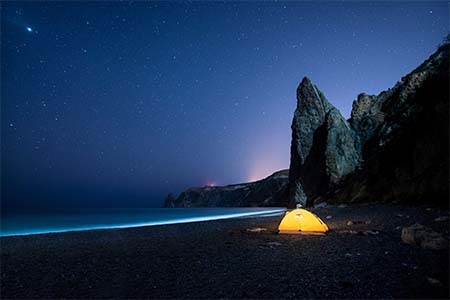
Camping with Jesus is a series of five units, each one focused on a key aspect of the Gospel story. Through fun drawings, coloring pages, activities, and Scripture memorization, it shows kids what heaven is, what sin is, who Jesus is, what it means to forgive, and how to grow to know God more.

Digging for Treasure: This set of four Bible-themed scavenger hunts are a great way for families and small groups to have FUN digging into their Bibles. Each scavenger hunt is based around a theme: you’ll get fired up for nature, pick a parable, search for your supper, and solve a whodunit mystery.

Learning About Character Traits: Through books and discussion time, and a notebook, children will learn about forty different character traits, their positive or negative aspects, and how that trait is exhibited by various people and characters.

Stewardship of God’s Earth is designed to introduce students of all ages to some of the basics of being good stewards of our natural resources. Topics such as compost, earthworms, repurposing, recycling, and personal stewardship are discussed.

Editing Photos with GIMP: This course teaches timeless principles of digital image manipulation using the GNU Image Manipulation Program. The course covers editing basics and image manipulation tools, along with numerous filters available to set loose the student's creativity in each photography.

How to Use Microsoft Excel is an eighteen-week online spreadsheet tutorial for users of Microsoft Excel. Homeschool students of all ages can apply these computer skills to any data application, from simple lists to accounting worksheets. The lessons include video instruction, practice assignments, quizzes, and plenty of review.

How to Use Microsoft Word: Computer programs of all types are part of the daily lives for most of us today. This eight-week video course walks you through how to use Microsoft Word so that you can use it as easily and efficiently as possible whether you are doing your homework, creating a resume for work, typing a list of things to do, or writing the next bestselling novel.

How to Use Microsoft®Word® Beyond the Basics: This 18-week online training course is designed to provide guidance and instruction to users of Microsoft Word. Homeschool students of all ages can apply these computer skills, whether doing homework, creating a resume for work, typing a list of things to do, or writing the next bestselling novel. Each week’s lesson includes a video demonstration and practice assignments.

Inkscape Online Adventure: This digital art course provides more than 10.5 hours of video demonstrations with step-by-step instructions for students who want to learn how to create vector graphics with Inkscape, a free online drawing tool. It teaches students how to master the basic tools and concepts essential to vector graphics, takes the mystery and frustration out of the pen and node tools, helps students become familiar with all the tools and features of Inkscape, builds confidence, and teaches skills and concepts that can carry over to other vector programs such as Illustrator.

Internet Entrepreneurship for Teens: Do you have a teen who is itching to start his or her own business? Do you have a child who loves to dream big and reach for the stars? We would love to introduce you to Dana Beasley and her class—Become an Internet Entrepreneur! Twenty-four weekly lessons help your teen learn how to start and promote a business and learn timeless business principles. Whether your teen actually starts his own business during this course or creates a mock business, he should be prepared to discover brand new ways to explore his God-given passions and purpose.

Keyboarding: David Kimball, “The Typing Coach,” provides ten weeks of audio and printable instruction to teach the basics of typing and improve students’ proficiency.

LibreOffice Writer Basics: LibreOffice is free word processing software that meets many needs in both the home and in numerous places of employment. LibreOffice Writer Basics introduces students to installing the program, the toolbars, list formatting, headings, images, shapes, and fonts. Video instruction and printable assignments are included.

Podcasting to Change the World: This course walks you through what a podcast is and why you would want to start one; how to plan your podcast; how to create a system so you don’t have to waste time repeating work with each and every podcast; how to handle cover art; how to prepare for your podcast; how to record, edit, and upload your podcast; and where to go now that you’ve created a podcast. It shows you the amazing opportunity you, as a podcaster, have to change the world.

Web Game Design: In the Web Game Design class, students are going to learn how to create some simple games right in their web browser. This is a programming-centric class, meaning the students will be writing (typing) code to make things happen. The course will cover topics including starting a JavaScript game, handling images and sound effects, input fields, 2D frame animation, virtual worlds, and much more.

Advanced Public Speaking: This is an eighteen-week class designed for students who want to gain more instruction in public speaking and the evaluation of speeches. This course requires the student to study various types of speeches and both write and deliver several of his or her own. It is recommended that the student complete the Introduction to Public Speaking class before moving into this class, as it will build on some of the concepts learned.
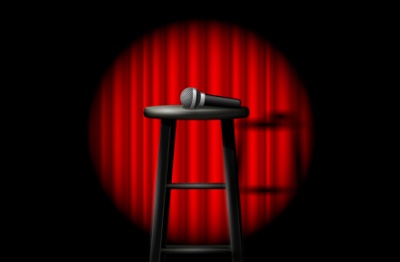
In the Limelight: From RachelAnn Rogish, author of Simply Shakespeare, comes this exciting dramatic adventure for families of all sizes and ages. Monthly units study drama and classic plays in the light of God’s Word. Instructions for producing your own production are included, such as tips for enjoying the study of drama as an only child. New units are being added regularly.

Public Speaking: Homeschool and recent Biola University graduate Rebekah Bell has excelled as a young public and debate speaker in national competitions. This five-month introductory course teaches the basics of public speaking and the several types of speeches.

Reader’s Theatre presented by Susan Brown is a series of 76 short scripts designed to be read by two or more students. Memorization is not required because the focus on this form of drama is on readingthe work with expression rather than reciting it. They are easily adapted to both single-child households and small groups. These scripts are a wonderful tool to increase reading skills, comprehension, speaking skills, and confidence.

Simply Shakespeare: Rachel Ann Rogish and Sharla Orren bring drama to your homeschool with more than a dozen classic plays. This drama elective studies the works and world of Shakespeare alongside the Biblical truths that can be learned from each play. Units are organized by play or topic.

Breadmaking Devotional: Through twelve lessons, Karen shares everything students need to know about getting started baking breads, from the vocabulary and understanding why yeast works, to how to turn it into an entrepreneurial business of their own. Throughout the course, she weaves lessons and encourages reflections on Jesus, the Bread of Life.

Career Exploration: Carol Topp of HomeschoolCPA.com teaches an eight-week course designed to help your student consider the world of career possibilities. From seeking God’s will and inventorying their talents to understanding career clusters and job shadowing, Career Exploration helps your teens prepare for whatever future God has designed for them.

Filmmaking: Director/Producer/Co-Writer of Advent Film Group, George Escobar offers thirty-three weekly lessons which take a detailed look at various aspects of the Christian filmmaking industry, including choosing the right camera, lighting, audio, production and post-production, and finding God’s stories.

Fun with Cooking is an exciting look at cooking basics with an emphasis on nutrition, food safety, and variety. Many lessons include a design component to help sharpen critical thinking skills. Numerous recipes are included.

Hands-On-Architecture taught by Amy Gillispie (Mrs. G.) on SchoolhouseTeachers.com provides step-by-step architecture lessons in many different mediums for the lower elementary through middle school student. Unit 1 will introduce students to exciting, easy-to-find materials they will use to make fun architectural structures, Unit 2 will lead students through the design of their own HOME, and Unit 3 will lead students through the design of a ZOO!

Hands-On Design Fun challenges students to create three-dimensional projects using a range of materials including fabric, paper, cardboard, and more. The elements of design criteria, prototypes, review, and presentation of final product are explored.

Hands-On Learning Activities Through Crafts: How would you like to be able to combine fun crafts, multiple subjects, and a wide range of ages together in one fun activity? That’s exactly what Hands-On Learning Activities Through Crafts is designed to do. Bring the family together and study science, history, and more through these lessons.

Heritage Crafts are life skills that people in the past used to create art and live productive lives. We will be learning a lot about these life skills by making a variety of cornhusk dolls, writing with quills, making ink, drying apples, making candles, and more. This class is best done as a family, as some portions of the crafts require parental supervision.

Home Economics with Heather Leach is more than learning about how to bake a cake or set a table; it is about learning fundamental lessons that can be built upon throughout life. Twenty-three weekly lessons teach basic home skills such as cooking and showing hospitality as well as personal skills including hygiene and manners. Emphasis is placed on the Biblical basis for important character traits, and weekly Scripture verses to memorize are included.

Homesteading: If you’ve ever wanted to ditch the chemicals in your household cleaners, can what you grow or purchase at a farmer’s market, make your own gifts and candles, or learn how to do things the natural way, you need to see what Lisa Barthuly is teaching us in her Homesteading class. This ongoing course shares tips and detailed instructions that can enable you and your family to live more simply and naturally. Printables and some how-to videos are included with these weekly lessons.

Introduction to Architecture with Tammie Bairen is a thirty-six week class that discusses some basic components of architecture as well as various structures including skyscrapers, bridges, cathedrals, homes, castles, and sports arenas. Students will learn about various aspects of each structure, including the marvel of its inception at that particular point in history, its function, the architects (where applicable) responsible for its creation, and the science behind its stability.

Introduction to Graphic Design is an excellent guide to the basics of graphic design for your middle school and high school students. It will teach students how to recognize quality graphic designs in the products they see and interact with every day, what makes certain designs stand out, how to design an eye-catching ad that communicates a specific message to a target audience, and what types of jobs are available for graphic designers today.

Photography: Michele Peterson’s thirty weekly lessons teach students how to see the way their camera “sees” and then to use that knowledge to create a recipe for the perfect picture.
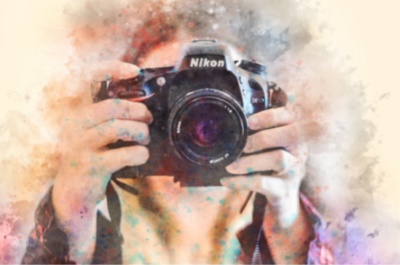
Photography Challenge: Forty-eight weekly photography challenges get homeschool students of all ages and skill levels thinking outside of the box and give them some creative springboards to capture their best shots yet. Each challenge can be tried again and again in any order as students' photography skills improve.

Starting a Micro Business (For Teens): Carol Topp’s second eight-week class with SchoolhouseTeachers.com, Starting a Microbusiness (for Teens), looks at what can be learned from starting a micro business, how to find your ideas and make a business plan, how to market your business, and more.

Whole Foods Cooking with Sue Gregg: You probably already know our next teacher from her more than 900 recipes in the eight cookbooks she has published. Sue Gregg’s class begins with an introduction to whole foods cooking, her story, and an explanation of what children can learn about cooking at various ages. You’ll waste no time putting what you learn into practice by making blender cornbread, almond and coconut milk, almond coffee cake, and more!

Wildlife Adventures: This fun course from Kelli Becton offers fifteen weekly lessons that introduce animals from alligators to jellyfish. Bible reading, Scripture memorization, copywork, vocabulary, spelling, geography, math, activities, crafts, coloring pages, crossword puzzles, and notebooking are included.

Asia: Trade Route Safari: Travel with Safari Saeed and teacher Bonnie Rose Hudson for a thirty-eight week tour of more than thirty Asian countries. Students will be introduced to the people, the history, and the animals of Asia through reading, writing, spelling and vocabulary, art, science, hands-on activities, and math worksheets.

Everyday Explorers: Australia and New Zealand: Explore the history of a different state of Australia or area of New Zealand one unit at a time. Seven monthly units take students across Australia and New Zealand, exploring historic locations and meeting exotic animals. Activities are provided for Kindergarten-2nd grade, 3rd-6th grade, and 7th-12th grade.

Everyday Explorers: Canada: Who says history is dull? Not us! Join us as eleven monthly units take students across Canada, exploring the history and natural beauty of this vast land. Activities are provided for Kindergarten-2nd grade, 3rd-6th grade, and 7th-12th grade.

Everyday Explorers: USA: Enjoy learning about the past—and the present—as we explore a different state each month. Monthly units take students across the United States, exploring the history and wonders of the nation. Activities are provided for Kindergarten-2nd grade, 3rd-6th grade, and 7th-12th grade. There’s even a coloring pack with each unit for younger students. This series is ongoing; not all 50 states are available at this time.

Learning Across the USA: This fun ten-week course brings American geography to life with notebooking activities that explore each state. Landmarks, state birds, state flowers, capitals, famous people, major industries, fun facts, and more for each state are explored.

Family Fitness: Bethany Learn of Fit2B Studio teaches with both video and printable components, explaining the importance of understanding and applying proper fitness while giving you and your family practical ways to get up and get healthy!

Nourishing Nuggets with Wendy Stoller is an ongoing series of bi-monthly lessons that look at the amazing way God created our bodies to work, explain the basic building blocks of food, and discuss how healthy eating choices can impact our lives.

ABC With ME: Jen McNamara brings history to life for your littlest learners with a preschool history course focused on the ABCs! This twenty-six week preschool class introduces little ones to key figures in American history, one letter at a time. They’ll discover that A is for Abraham Lincoln, B is for Benjamin Franklin, and more. Each week includes information about the historic figure, suggested reading, a coloring sheet, and other helpful resources.

American History for Beginners: Through engaging text, pictures, crafts, maps, and more, early elementary students can discover the beginnings of the United States of America, from Columbus to the Bill of Rights. Weekly lessons provide the material you need to bring the past to life, and plenty of supplemental links to free resources around the Internet share ideas to keep your students engaged throughout the week with what they have learned.
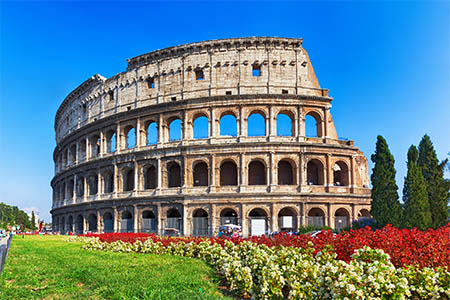
Ancient History for Elementary: Lead your children on a journey through ancient history and explore the cultures of India, the Native Americans, Mesopotamia, Sumer, the lands of the Bible, Egypt, Greece, Rome, and China through thirty-six age-appropriate lessons that includes a wide range of activities and projects.

Asia: Its People and History: Bonnie Rose Hudson shares a sixteen-week introduction to the history of Laos, Bangladesh, Nepal, China, Vietnam, and Iran with an emphasis on what life is like for Christians living there today.

Experiencing History: Creation to the Reformation is a fun, engaging look at history from the creation of the world through the Reformation, shared using a young-earth timeline for reference. Each lesson includes an audio lecture to listen to and a printable lesson to read. The teacher’s guide includes quizzes and activities.
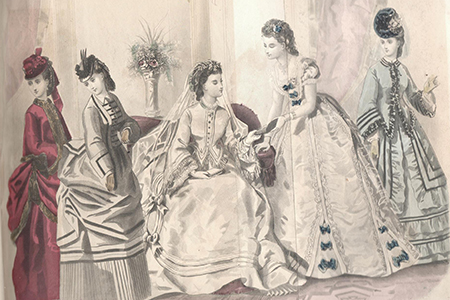
Fashions in History is a multi-level multidisciplinary study for young ladies, focusing on women and children’s fashions from the 18th century to 1910. In addition to readings on the main topic, the study contains optional readings on dolls and 19th-century culture for students of all levels, conversations about museum and archival topics, historic needlework, historic recipes, coloring pages, practice in computer skills, vocabulary, clothespin-doll-making projects, and a short course in hand-sewing and embroidery. Any part of this curriculum may be used to supplement a regular history or home economics course, or it may be used as an elective course.
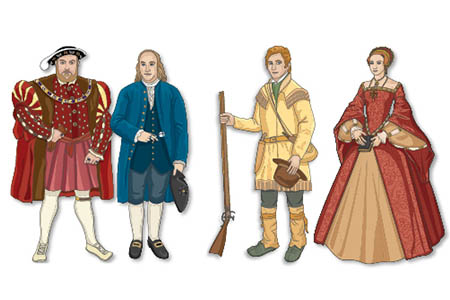
Figures in History: Cathy Diez-Luckie of Figures in Motion creates weekly hands-on activities your children can enjoy that focus on a notable character from history. From Justinian to Robert E. Lee, Benjamin Franklin to Alexander the Great, these standing cutouts and short lessons will captivate your younger students. These lessons are available on a rotating basis and are not permanently archived.

Getting Started with American History for Kindergarten: In these kindergarten history lessons, students explore American history from the time of Christopher Columbus to the Revolutionary War. They travel through time, discovering major events that influenced American society, looking at important American symbols and their history, and learning about other cultures and comparing them to American culture.

Hands-On Notebooking: The United States: This course is a fun way to notebook across the United States. It includes research prompts, notebooking materials, a suggested reading list, original poems, copywork, and more. It is designed for parents and children to do together, with the curriculum serving as a guide and platform for a fun learning adventure.

Lapbooking Through the Ages: From ancient civilizations to World Wars I and II, these history-themed lapbooks introduce your students to everything from spies and espionage to the history of toilets through time! From silly to serious, this series explores history in an engaging, hands-on way that is designed to keep your children creating and learning.

People and Places of World War II is a series of stand-alone unit studies. The first unit, “The Who’s Who of WWII and the Paths Leading Them to War” covers twenty-one weeks. The second unit, “The American Home Front” covers forty-seven weeks. These are excellent supplements to a history class or a great introduction to this period of history for students. The class consists of numerous games and activities, puzzles, and projects that help students develop and sharpen skills in critical thinking, research, note taking, handwriting, history, geography, reading, writing, art, math, analyzing, and much more. A list of additional resources for further study is also included.

Renaissance History: When you hear the word Renaissance, what comes to mind? Leonardo da Vinci? Michelangelo? Do you ever think of shoguns in Japan? What about the Byzantine and Ottoman Empires? Rhonda Clark helps students explore Renaissance History through an ongoing weekly series exploring Renaissance history not only in Europe, but in Africa and Asia as well. Activities include crafts, lapbooks, additional reading suggestions, and more.

This Day in History leads students on an exploration of important events—from ancient history through today—with timeline figures, living book lists, short fiction, discussion questions, hands-on activities, and upper grade options.

World History: A Two-Thousand-Year Tour lets students travel through time, beginning with the establishment of the Roman Republic and ending with present day. This thirty-six-week course will cover some of the major events that have happened in the world and will introduce some of the key players in those events. The lessons will afford students the opportunity to research and learn as they are directed to various websites, online videos, and books (many of which will be available at your local library). Discussion questions are provided, along with tests and essay questions.
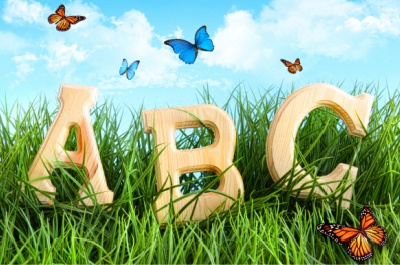
ABC: What Will I Be? is a preschool course by Alecia Francois, a pastor’s wife, blogger, and mother of two. She brings you crafts, sensory activities, math, and sometimes even science that you can use to help your preschooler learn their ABCs while learning about the world around them through different professions. The hands-on activities are fun while allowing you to explain many concepts that might not normally be brought up in a normal conversation, such as how the craters were formed on the moon (and what they are); you’ll find that in the A is for Astronaut pack. There is counting fun, sensory play ideas, a picture book list, and more!

Adventures with Books includes suggested reading lists based on a theme and related activities you can do with your family to bring the stories to life. Activities and books for various ages are included, and themes include holidays, authors, and much more.

All About the Alphabet is a fun way to teach and reinforce upper and lowercase letters with your preschooler through games, foods, books, crafts, toys, and more. From maps to dolls, treasure hunts to lunch menus, you’ll be amazed by how many fun ways there are to learn about letters!

Beginning Handwriting and Phonics provides hundreds of activities to make teaching phonics, handwriting, and letter and number recognition easy and fun. Learning activities include tracing and writing practice, cutting and pasting, coloring, matching, and more.
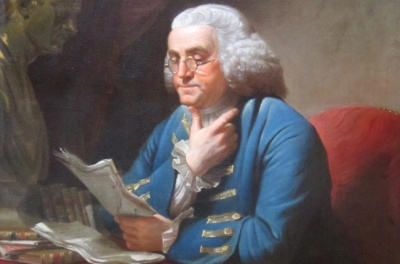
The Benjamin Franklin Writing Method taught by Cheri Blomquist explores how a man with limited educational opportunities became one of the literary lights of the nation. In this 24-week course your student will follow in Benjamin Franklin’s footsteps by borrowing his step-by-step study method to improve his/her writing. Each lesson will offer a different selection to study. Topics studied include active reading, notetaking, narration, analysis, and writing in a variety of literary genres.

Ditch the Desk: Enjoy some hands-on learning for your K-5th graders with these twenty-four weekly or monthly unit studies that can help your K-5th graders explore the world around them–without being tied to a desk. Topics include authors or illustrators, backyard critters, baking with math, banishing boring book reports, birds, the life of frontier photographer Evelyn Cameron, fairy tales, growing up Dutch, the ocean, the weather, and even candy canes! You can learn about everything from space to the Renaissance (you can even throw your own Renaissance festival)!

Everyday Copywork brings your student penmanship practice, in both print and cursive, through copying Bible portions, excerpts of literature, foreign language selections, and much more. There are many different lengths, and the copywork varies in difficulty, so it is suitable for many ages. There are also a few copywork selections available in Spanish, helpful for students who wish to practice their Spanish language skills or Spanish-speaking students who wish to practice their handwriting skills. You will also find alphabet worksheets for the little ones who are just learning to print. Help your student improve his/her penmanship with more than 175 copywork selections in both print and cursive.

Exploring Poetry with Notebooking is a more in-depth study of poetry, asking children to begin looking at the meaning of the poems. Attention is given to using the context of the poems to define unknown words. Students can begin playing with language and writing their own poetry in a non-threatening way. Students become closer acquainted with poetry by using it as a foundation for dictation. When students read and write quality literature, they become better writers themselves. They begin to integrate those skills into their own writing.

Lapbooking: Kimm Bellotto of In the Hands of a Child shares a new lapbook each month covering subjects ranging from the human eye to pandas to classic literature. More than two dozen titles for various ages are currently available.

Pre-K Activities: Read and Play: Have fun with your littlest learners and find creative ways to enhance your children’s experience of stories with fun games, activities, and more! Resources for more than three dozen stories are currently available.

Preschool in a Box: Each weekly theme incorporates fine motor skills and development in five daily activities for children ages 2-5 as they learn about everything from apples to superheroes and snowmen to safaris! Most lessons also include letter/number recognition and counting, sequencing, patterns, or early math readiness.

Research Skills for Middle School is a six-week unit designed to supplement a middle school language arts class or help students brush up on research skills. Topics covered include using a dictionary, library skills, writing a bibliography, checking the accuracy of online information, and writing a proper citation. Lessons can be done sequentially, broken down into more than six weeks, or combined into fewer weeks. Select lessons may also be chosen to be completed independently of the rest of the course if review of a certain topic is desired.

Sparking the Noggin: Creative Writing with Pictures: Staring at words on a page can be scary. Staring at a blank page you are supposed to fill with words can be even scarier. Sparking the Noggin: Creative Writing with Pictures overcomes both of those fears with weekly writing assignments that are fun, short, and based on a picture. This is an excellent way to help reluctant writers defeat their fears and start letting out some of the boundless creativity stored inside of them.

Teaching Reading Through Play is divided into 180 short lessons, covering a 36-week school year. Each weekly topic features five short activities specially designed to teach reading through play. Doing one activity daily, five days each week, is recommended because short, repetitive exposure of a concept over time is usually more beneficial to young learners than longer lessons less frequently. Also included is weekly information designed to give parents insight into the science of teaching reading and answer some common questions.

The Art of Literature: Famous Short Stories: This hands-on Language Arts course investigates twenty-four well-known stories through art projects and thematic investigation. Complete directions for the projects are included, along with discussion points, quizzes, and answer keys. The stories are presented in stand-alone units, so they may be done in any combination or order.

All About Shapes is a fun way to teach and reinforce basic shapes with your preschooler through games, foods, books, crafts, and more! Learn about circles, ovals, squares, rectangles, triangles, stars, pentagons, octagons, crescents, hearts, and diamonds/rhombi.

Building a Foundation with Kindergarten Math: Introduce your little learners to the concepts and basics of the days of the week, months of the year, seasons, weather, number recognition, counting, skip counting, shapes, money, place value, and more with lots of hands-on activities and printable worksheets.

Covering All the Bases: Geometric Area and Volume: This seven-week course covers the basic formulas for area and volume by explaining the underlying principles that created them. It uses video lessons, hands-on activities, and text worksheets with plenty of opportunity to learn and review.

Fraction Workshop: This fun, twelve-week fraction workshop focuses on understanding the basics of fractions using a visual and hands-on approach. Designed for students of any age who need a boost in their understanding of fractions, this workshop will illustrate fractions using concrete objects—balls, vegetables, Popsicle sticks, and more.

Hands-On Math Help with Cuisenaire Rods is designed to empower parents to help their children learn. Its purpose is to help parents of students in preschool-3rd grade make math enjoyable instead of frustrating. Through a free app and weekly tutorial videos, Philip Rowlands shows parents how to teach math in a manner that involves play, directed activities, open-ended tasks, and challenges. It is designed to work with Cuisenaire rods, but instructions for making your own set are included if you do not currently have them.

Advanced Music Theory: This advanced music theory course is designed for the student who has already mastered the skills presented in Music Theory I and II. It explores scales, intervals, chords, and modes, providing students with a firm understanding of music theory.

Beginner Drum Lessons: Through text and video lessons, this course teaches students to play the drums while also helping them understand the elements of music such as melody, harmony, and rhythm.

Beginning Violin: Nancy Blue’s Beginning Violin class “Strings of Praise” will have you and your children learning to play the violin before you know it! Nancy’s thirty-two weekly lessons teach beginning violin skills through video instruction and primarily uses the Suzuki method.

Fun with Music is a collection of games designed to help students of all ages learn important musical terminology including note names, music intervals and key signatures, symbols, and other terms. These games can be adapted in countless ways to fit your student’s age and interest level.

Guitar: Jerry Jennings, recording artist, performer, teacher, and author, delivers twenty-eight weekly lessons using video and written material to help students with an interest in playing the guitar develop a strong foundation of skills on which to build.

Preschool Playground: All of our preschool classes are very hands-on. Visit our Preschool Playground to find a list of all of them!

Animal Science: This Animal Science homeschool curriculum is for middle school and high school students who want to learn more in-depth information concerning animal species, habitats, and care. Taught by a practicing veterinarian, twenty-seven weekly lessons cover animal classification, digestive systems, reproduction, food animals, companion animals, human responsibility toward animals, and preventative care in domestic animals.

Botany: Plant Science and Field Studies: Throughout this nine-week Botany: Plant Science and Field Studies homeschool course, students use a journal/notebook to record vocabulary words and their definitions. They provide short paragraph answers to some questions as well as look more deeply into a few topics covering the science of plants. Students have the opportunity to perform experiments, demonstrations, and observations through field study of plants.

Charlotte Mason Preschool: Join Brittney Jordan for six four-week units that explore nature study themes and incorporate activities such as handicrafts, art, and living books to help you and your littlest ones enjoy purposeful play and fun time together.

Chemistry: All Things Matter: Anna Crisostomo loves teaching middle school science and challenging her students to think and create! This twelve-week introductory course covers topics such as the physical and chemical properties of matter, the phases of matter, and more.

Curious Science: From diamonds to quicksand, slime eels to fire ants, this 2-year (72-week) science series incorporates eighteen one-month unit studies that will intrigue, surprise, and fascinate students and parents alike. Designed for elementary grades, each unit includes language arts, math, science, art, Bible, and history for 3rd-4th grade, as well as activities for both younger and older students as well.

Daily Discoveries: Yvonne Blake brings an ongoing series of unit studies that explore various environments such as the forest, the seashore, and ponds. Each environment is studied for four weeks, with each week containing reading material, vocabulary exercises, math, writing prompts, and an activity.

Everyday Astronomy: Starting with the sun and moving out from there, “Professor Light” shares 180 bite-sized astronomy lessons that introduce students to the wonders of God’s universe. Activities such as observing the stars, creating tasty snacks, and more are included.

Exploring God’s World with Kindergarten Science combines young children’s love of animals and nature with easy-to-follow short stories and tons of hands-on activities. From flowers to flies and cats to coal, enjoy ninety bite-sized lessons, conduct experiments, and have fun!

Exploring God’s World with First Grade Science is a 36-week introduction to science for first grade. It includes text, experiments, activities, extension activities, and links to further resources.
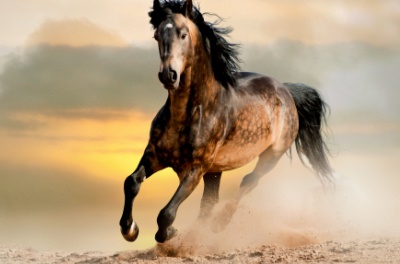
Exploring God’s World with Second Grade Science: What are the planets like? How do the oceans work? What makes up a living thing? Exploring God’s World with Second Grade Science helps answer some of the myriad of questions students ask. Satisfy their curiosity with the text-based course filled with fun lessons and activities!

Exploring God’s World with Third Grade Science: How do heat and pressure change a sedimentary rock? Is a snail’s head part of its foot? Exploring God’s World with Third Grade Science digs into topics such as animals, body systems, rocks and minerals, electricity, and more. Expand your knowledge with this text-based 36-week course full of interesting lessons and fun activities!

Exploring God’s World of Fourth Grade Science explores topics often taught in fourth grade including the scientific method, plants and animals, habitats and environments, the earth and solar system, and many other topics. This full-year course includes reading assignments, worksheets, quizzes, and optional labs for hands-on practice.

Exploring God’s World with Fifth Grade Science: This full-year course is designed to teach fifth grade students about the incredible creativity and diversity evident throughout creation. Through weekly lessons and reading assignments, comprehension questions, and periodic activities, students will study and explore the world around them.

Exploring God’s World with Sixth Grade Science: These online sixth grade science lessons include text to read as well as numerous online resources to explore and many hands-on experiments to help bring life science, earth science, and physical science to life.

Fun with Science is a great way to introduce your younger elementary students to basic life science, earth science, and physical science concepts. From body systems to volcanoes, the five senses to the states of matter, students can discover amazing facts about God’s creation. Lots of printable worksheets and hands-on activities are included.

Lapbooking Through Science: From farm animals to penguins, these mini science-themed lapbooks will introduce your younger students to human anatomy, healthy eating, and a variety of animals. Each lapbook includes basic lapbooking templates along with other activities.

Nature/Outdoors: Explore twenty-two different parts of nature, from traveling seeds to coyotes, rainbows to winter weather. Plenty of hands-on activities are provided in this nature and outdoors homeschool science course.

Physics (Introduction): “Science Jim” Mueller’s educational and entertaining Physics class is designed especially for homeschoolers. This eighteen-week course provides an introduction to gravity, friction, velocity, acceleration, Newton’s laws, electricity, magnetism, and more, while having more fun than you ever thought possible.

Science All Around Us is a fun series of stand-alone units meant to enrich your early elementary science classes. Units explore the world of plants and animals through topics such as the food chain, migration, hibernation, dormancy, camouflage, metamorphosis, pollination, and ecosystems. Lessons are brightly colored and include both hands-on and written activities.

Science Experiments with Jason Lindsey: Dive into more than 100 science experiments that demonstrate what you can do with basic household items in fun and easy experiments that will spark a love of science in your children.

Science Experiments with World Book is a fun way to get hands-on experience with science. Each science experiment includes the steps and instructions needed to complete it. Selected experiments also include video.
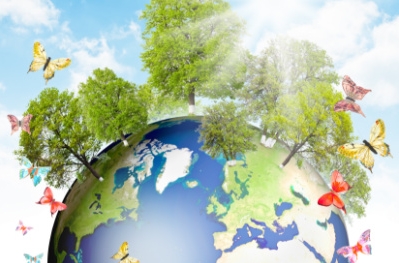
Science of Our Planet is a short, supplemental unit designed to help you introduce your younger elementary students to some of the basics of earth science. From natural resources to the atmosphere to ecosystems, students can discover amazing facts about God’s creation. Printable worksheets and hands-on activities are included.

Scientists A-Z is a fun look at science through the lens of history. Each short lesson is followed by comprehension questions, activities, and additional resources that provide options for going deeper.

Small World Sensory Science: One of the ways preschoolers learn is by touching, feeling, doing, and exploring. That is what Small World Sensory Science is designed to help them do. Through twelve lessons, they will explore the farm, the pond, the ocean, wind, construction, and much more. Because sensory activities can sometimes be messy, there is a lesson on helping to keep things tidy, too!

Tinkers’ Club: Eight Tinkers’ Club homeschool science lessons challenge your curious students to build and invent. Put your curiosity to work as you take things apart and put them back together again in unique and unexpected ways.

Wonderful World of Bugs is divided into four units that explore why we should study bugs, what exactly is a bug, the life cycles of butterflies and moths, and the practice of nature journaling. It includes hands-on assignments and also written assignments for families who choose not to bring nature indoors!

Wondrous Weather explores the science of weather conditions, the tools of meteorologists, methods of weather observation, and methods of weather forecasting. The class includes hands-on experiments, printable worksheets, and projects.

In All About Careers, students have the opportunity for an in-depth study of eleven careers in various fields. Through fun activities, text, projects, and the experiences of professionals shared in the text, students can get a glimpse of possible career choices and ideas for many more to investigate.

Elementary Economics for First Grade: What does it mean if something is scarce? What types of resources are limited? What is a renewable resource? Why do we need to earn money? What are goods and services, and what does it mean to consume something? Elementary Economics for First Grade explores these questions and more through picture books, hands-on activities, crafts, and games.

Elementary Economics for Second Grade: What does it mean to trade, and why do people and nations practice trade? What kinds of jobs do people do to earn money, and why do we need to earn money? What does it mean to produce and consume? Elementary Economics for Second Grade explores these questions and more through picture books, hands-on activities, crafts, and games.

Elementary Economics for Third Grade: Help students understand the motivation behind and the steps involved in bartering and trade, illustrate the concept of supply and demand, explain why we work and the ways people earn money, and other foundational aspects of economics in Elementary Economics for Third Grade. Learn about economics through common books, hands-on activities, games, and more.

Each week, Kindergarten Social Studies will lead your little ones through exploring topics such as their homes, what they look like, what times of the day mean, and much more. The printable worksheets that are included are fun and easy to print out and include in a notebook as a special keepsake.

Stepping Through History: Starting with You!: History is full of stories, and this modern history class for early elementary students helps students learn the story of history starting with their own. They’ll build a family tree and then work backward through history until the 1870s and the days of Alexander Graham Bell. There are fun notebooking activities designed to help your child personalize their story of history.

Stories of Great Americans for Little Americans is designed to not only bring history to life but to also build language through vocabulary activities, practice handwriting skills with copywork, apply the lessons of the story through Bible activities, help students learn about geography, improve reading comprehension, and foster creativity through hands-on projects.

Western Hemisphere Social Studies: From icy Greenland to Tierra del Fuego, the Western Hemisphere includes more than two dozen countries and territories, is home to close to one billion people, and is a wealth of countless cultures, languages, and people groups. This course is a basic introduction to the geography and peoples of the Western Hemisphere.
eBooks from The Old Schoolhouse Magazine

eBooks from The Old Schoolhouse® Magazine: Please download these special eBooks from The Old Schoolhouse® Magazine, free to members of SchoolhouseTeachers.com.
You must be logged in to see these resources.


